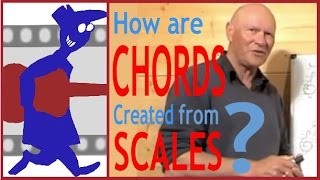Guitar Strumming Secrets - Part 1
Published on 26 January 2016
If you would like to gain full access to all our Guitar Teaching Materials please visit the Secret Guitar Teacher Site and take a free tour: http://secretguitarteacher.com/youtube/ssb/Intermediate/1MElckNCKbo/112932811-how-can-i-make-my-playing-sound-more-interesting-1.php
Here's the abridged transcript:
SECRET SOUND BITE I1
Title: How can I make my playing sound more interesting?
In this short video I want to give you an overview of what to do to develop your own individual style of guitar playing.
So here are three pieces of advice, that I think apply, once you have got past the stage where most of your efforts are concentrated on remembering chord shapes and keeping up with chord changes.
My first piece of advice is to narrow your focus. A typical approach to learning guitar often involves trying to learn as many songs as possible.
This is no bad thing in itself, but what often happens is that your focus gets
stretched out and much of your energy goes into memorising chord sequences and trying to remember the order of verses, choruses and middle eights and so on.
To accelerate the development of your style of playing it is better to go back to just two simple chord shapes like Em and Am for example.
And stick to working with nothing but just those two chords for a while
My second piece of advice is to really focus on listening to your playing.
It’s a funny thing, but it’s all too easy to get so wrapped up with trying to follow chord sequences, that you completely forget to actually listen to what you are playing!
Playing just two simple chords frees you up to listen more closely. You will find that you will then instinctively start making many subtle changes to how you physically interact with the guitar.
It’s likely that your touch will start to lighten and you’ll introduce more dynamic range into your strumming adjusting from soft to loud or loud to soft according to the needs of what you are playing or the mood you are feeling in when you play.
You’ll also start to find yourself being more selective of which strings you home in on with your strumming hand.
With your fretting hand, you will find yourself positioning your fingers ever
more precisely just behind the frets as your closer listening reveals slight faults in your sound production that you may not even have noticed before.
You may even begin to add a bit of fretting hand muting technique. Squeezing the chord shape in time to the beat to help give your playing a little more rhythmic definition
These are all things that I have noticed students start to develop almost unconsciously, simply as a result of being encouraged to focus on playing repetitive, simple chord changes and listening closely to the sound they are making.
The third piece of advice is to experiment with your playing. Again this should be applied to both hands.
With your fretting hand you can listen to what happens when you start lifting the chord shape off and hammering it back on like this or sliding the shape up a couple of frets and back
You can also try this just on one or two individual strings
Then start experimenting with adding notes to the chord, using either the spare fingers that aren’t being used in the chord shape…
…or temporarily shifting fingers that are part of the shape
Simply employ a process of trial and error, using your ears to decide whether an idea works well or not.
Of course this involves being selective with the strumming hand as well.
Maybe thinking more along the lines of picking rather than strumming - or combining strumming with picking something like this
There’s a whole range of things you can experiment with at this end of the guitar too.
Decelerating the strum can have has a nice effect or reversing the direction of the stroke. Using a bit of palm muting which can be combined with shortening the pick and hitting the strings a lot harder, adding a nice percussive effect to your sound.
A few hours spent messing about like this will help you develop a whole bunch of techniques that you will then quickly find you start using with other chord changes as well.
So that’s a quick glimpse. If you’d like a more detailed rundown on this approach to developing your own individual style, then I recommend our Intermediate Acoustic Guitar Course - you’ll find a link to more information about that in the description text that goes with this video.
If you found this little video useful, please click on the ‘Like’ button and do feel free to share the video with your friends.
And if you’d like to gain full access to all our guitar teaching materials please visit the Secret Guitar Teacher website and
take a free look round at what’s available there.
See you again soon!
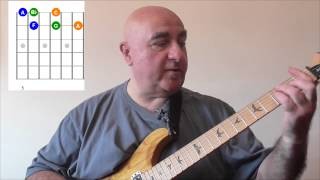 Soloing with Thirds and Sixths on the Guitar
Soloing with Thirds and Sixths on the Guitar
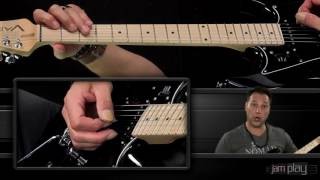 Build a Solo Using Arpeggios
Build a Solo Using Arpeggios
 There is only one chord shape on the guitar - Part...
There is only one chord shape on the guitar - Part...
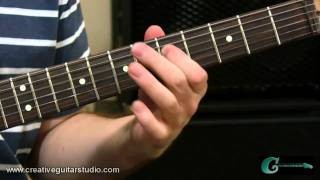 GUITAR THEORY: Intervals from Music Staff to Guita...
GUITAR THEORY: Intervals from Music Staff to Guita...
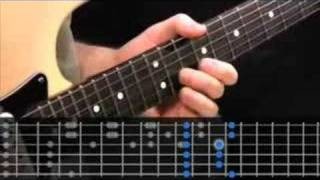 5 Essential Blues Boxes: Box 5 Preview
5 Essential Blues Boxes: Box 5 Preview
 Mother of All Major Scale Exercises - Part 1 of 4
Mother of All Major Scale Exercises - Part 1 of 4
 IMPROVISATION: 3 Steps to Meaningful Solos
IMPROVISATION: 3 Steps to Meaningful Solos
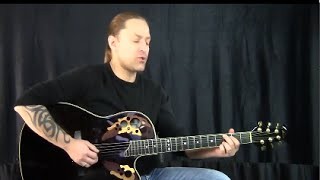 A Simple Approach to Learning and Playing Chords f...
A Simple Approach to Learning and Playing Chords f...
 How To Use Scales For Improvising On The Guitar
How To Use Scales For Improvising On The Guitar
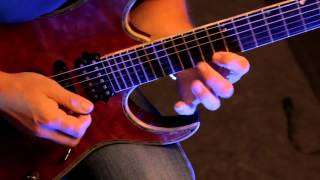 Killer Shred Technique
Killer Shred Technique

